How Much Caffeine in White Tea
When you steep white tea, you're consuming a beverage with a caffeine content that's generally lower than that of other tea types. On average, an 8-ounce cup of white tea contains around 15 to 30 milligrams of caffeine. However, this amount can vary based on several factors:
- The specific type of white tea: Different white tea varieties, like Silver Needle or White Peony, may have slightly differing caffeine levels.
- Steeping time and temperature: Longer steeping times and higher water temperatures can extract more caffeine.
- Leaf size and processing: Whole, unbroken leaves tend to release caffeine more slowly compared to broken leaves or tea bags.
Here's a brief comparison of caffeine content between various tea types:
| Tea Type | Average Caffeine Content per 8-ounce Cup |
|---|---|
| White Tea | 15-30 mg |
| Green Tea | 20-45 mg |
| Oolong Tea | 30-50 mg |
| Black Tea | 40-70 mg |
To moderate your caffeine intake, you can adjust the brewing time. A shorter steep will usually result in less caffeine in your cup. Remember, the actual caffeine content can vary based on the brand and specific product, so always check the packaging for details if available.
Bestsellers
Factors Affecting Caffeine Levels
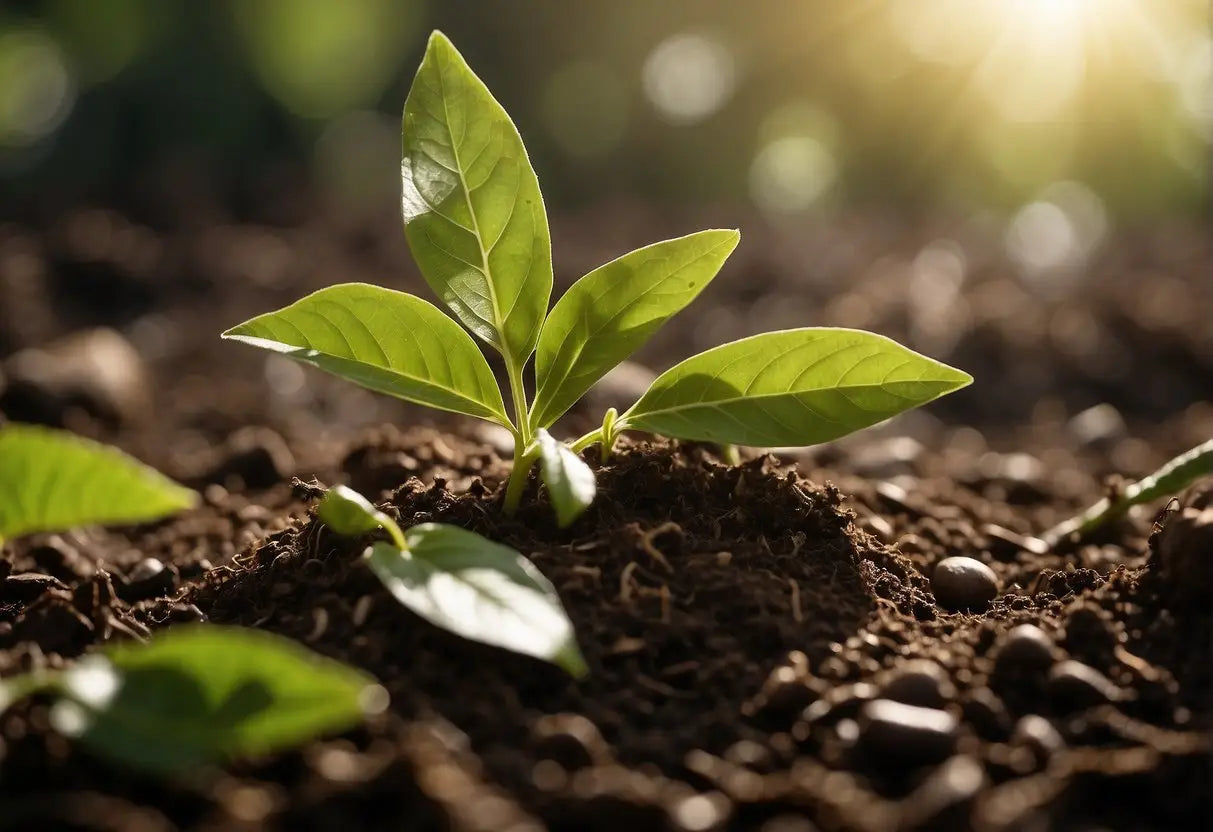
When considering the caffeine content in your white tea, it's crucial to understand that several factors can influence it dramatically.
Tea Variety
The type of white tea plays a significant role in its caffeine content. For example, the Silver Needle, made exclusively from young tea buds, typically contains more caffeine than White Peony (Bai Mudan), which includes both leaves and buds.
Brewing Time
The longer you steep your tea, the more caffeine will infuse into your cup. A brief brewing time can result in a less caffeine-rich beverage, while a longer one increases the caffeine level. For instance:
- 1-2 minutes: Light caffeine infusion
- 3-5 minutes: Moderate caffeine level
Water Temperature
Hotter water extracts caffeine more effectively from tea leaves. While white tea is often brewed at lower temperatures than black or green teas, the temperature still impacts caffeine content.
- 160-185°F (71-85°C): Standard brewing temperature for white tea
- 185-205°F (85-96°C): Higher temperature for increased caffeine extraction
Comparison to Other Teas
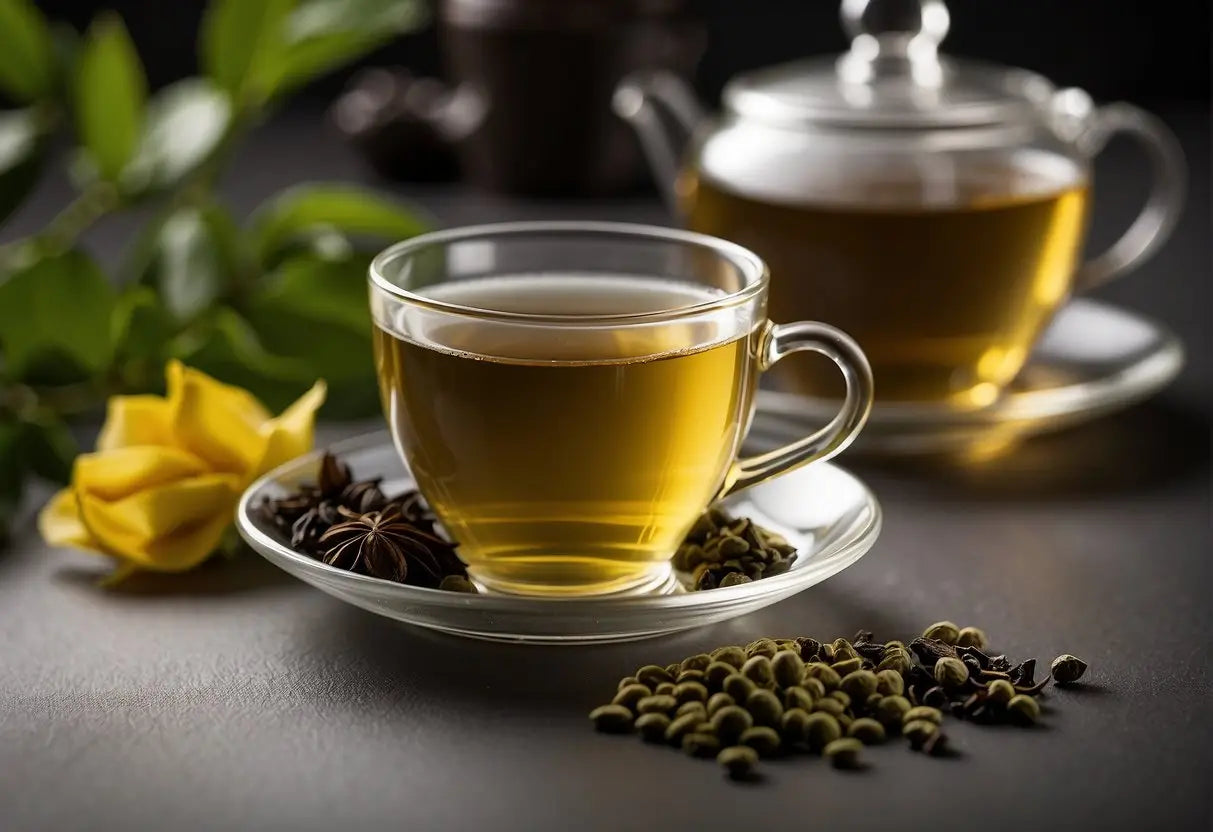
In your exploration of caffeine content across various teas, it's important to note that white tea generally contains less caffeine than black tea but more than herbal tea, with green tea sitting in the middle of the spectrum.
Black Tea
Black tea is typically the highest in caffeine, often ranging from 40 to 70 milligrams per 8 oz cup. The oxidation process that black tea leaves undergo increases the caffeine level, which is why your morning black tea can be quite energizing.
- Example: Assam Black Tea (about 60-70 mg/8 oz)
- Example: Earl Grey (about 40-60 mg/8 oz)
Green Tea
Your cup of green tea will usually have a moderate amount of caffeine, approximately 20 to 45 milligrams per 8 oz serving. The less processing green tea undergoes as compared to black tea results in a lower caffeine content and a subtler effect on energy levels.
- Example: Sencha Green Tea (about 30-40 mg/8 oz)
- Example: Matcha (because it's powdered leaf, it can be higher, around 70 mg/8 oz)
Herbal Tea
Herbal teas, on the other hand, are not true teas and generally do not contain caffeine. Your herbal infusions—such as chamomile, peppermint, and rooibos—are naturally caffeine-free, making them an excellent choice for evenings or for those avoiding caffeine entirely.
- Example: Chamomile (0 mg/8 oz)
- Example: Peppermint (0 mg/8 oz)
Health Implications of Caffeine
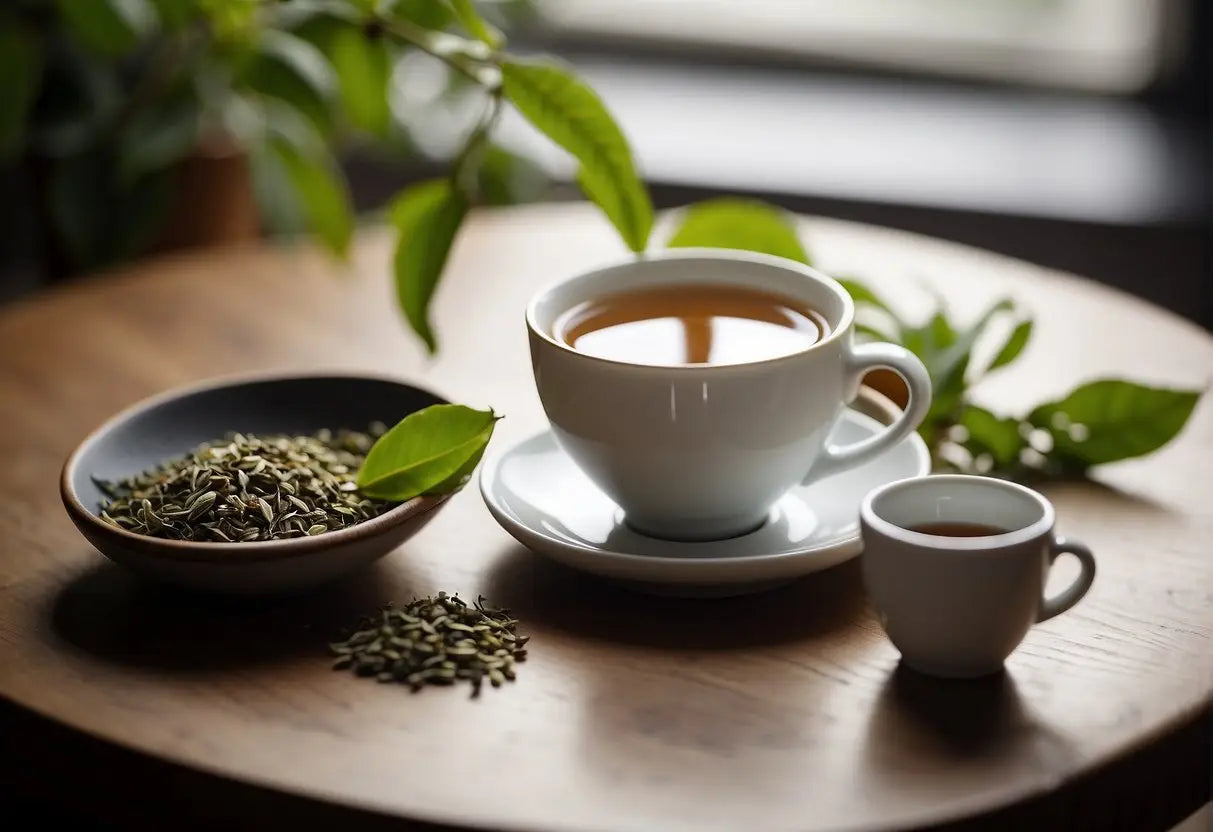
Caffeine's impact on your health can be profound, with both beneficial and adverse effects depending on consumption.
Lao Ban Zhang
Benefits
- Mental Alertness: Regular, moderate caffeine intake can enhance your mental alertness and cognitive function.
- Physical Performance: Consuming caffeine before exercise may boost your physical performance by increasing fatty acid oxidation and delaying fatigue.
Risks
- Sleep Disruption: Ingesting caffeine, especially later in the day, may disrupt your sleep patterns and reduce sleep quality.
- Heart Health: High caffeine consumption can lead to increased heart rate and blood pressure, potentially affecting your overall heart health.
Caffeine Extraction Process
To understand the caffeine content in white tea, it's essential to explore how caffeine is both retained and isolated during the processing of tea leaves.
Processing of Leaves
The level of caffeine in white tea is influenced by how the tea leaves are processed after harvesting. White tea is known for its minimal processing, which preserves its delicate flavors and retains a moderate caffeine content. The leaves and buds are plucked, withered naturally to allow for a slight reduction in water content, and then dried. This process ensures that the natural caffeine present in the leaves is mostly conserved.
Caffeine Isolation Methods
When isolating caffeine from white tea, you'll find several methods used to determine its caffeine concentration. Here are the key approaches:
-
Spectrophotometry: This method involves measuring the absorption of light by caffeine molecules at a specific wavelength.
-
High-Performance Liquid Chromatography (HPLC): A more precise technique that separates caffeine from other compounds, allowing for accurate quantification.
-
Gas Chromatography-Mass Spectrometry (GC-MS): This combines both gas chromatography and mass spectrometry to deliver a detailed analysis of caffeine and other volatiles in tea samples.
By analyzing processed leaves with these methods, one can precisely gauge the amount of caffeine present in white tea.
Regulations and Standards
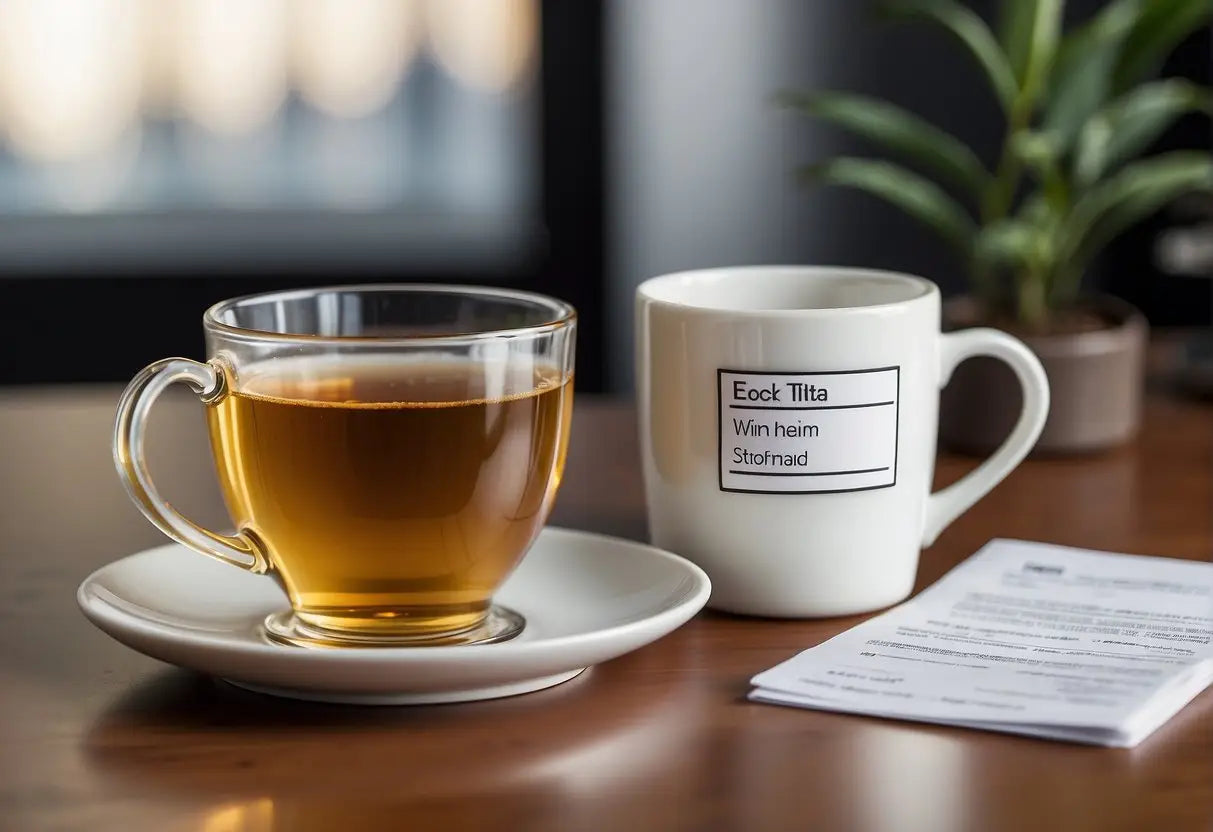
When you consider the caffeine content in white tea, it’s crucial to understand the governing regulations and standards that guide its production and labeling. Various countries enforce specific guidelines for the disclosure of caffeine content on packaging.
In the United States, the Food and Drug Administration (FDA) doesn't require manufacturers to list the exact amount of caffeine on the labels of tea products. However, there must be a label if the product contains added caffeine. The FDA considers caffeine as both a food additive and a Generally Recognized as Safe (GRAS) substance, depending on its usage.
The European Food Safety Authority (EFSA) requires that beverages containing more than 150 mg/L of caffeine must state “High caffeine content” on the label, in accordance with EU regulation No 1169/2011 on the provision of food information to consumers.
| Region | Regulation | Labeling Requirements |
|---|---|---|
| United States | FDA guidelines | Added caffeine must be labeled |
| European Union | EU regulation No 1169/2011 | "High caffeine content" for >150 mg/L |
For your safety and assurance, you should check the labeling if you are sensitive to caffeine or are monitoring your intake. If precise amounts are not listed, which is often the case with tea, consider contacting the manufacturer directly or consult third-party research that analyzes the caffeine content in different tea brands.
Keep in mind that the caffeine content in white tea can vary. Factors such as the type of white tea, the brand, the brewing time, and the temperature of the water all influence the final caffeine content in your cup.
Measurement Methods and Accuracy
When measuring caffeine in white tea, you will encounter a range of techniques, each with its own degree of precision. To obtain the most reliable results, High-Performance Liquid Chromatography (HPLC) is widely adopted. This method separates caffeine from other compounds, giving you a clear measurement.
Gas Chromatography (GC) offers another accurate assessment, though not as commonly used as HPLC for caffeine due to the necessary preparation of the sample. Spectrophotometry is a less precise alternative; it provides a broader overview and may not be as sensitive to low caffeine concentrations present in white tea.
-
HPLC:
- Separate compounds
- Highly precise
-
GC:
- Accurate
- Requires preparation
-
Spectrophotometry:
- Less sensitive
- Broad overview
The accuracy of these methods can be influenced by several factors, such as the quality of tea leaves, extraction efficiency, and calibration of instruments. For instance, improperly calibrated HPLC equipment might give inaccurate readings.
Interlaboratory comparisons are crucial in guaranteeing consistency across different testing facilities. This involves comparing results from multiple laboratories using the same tea samples to ensure that measurements are consistent and reliable.
In brief, while no method is without its limitations, adherence to strict procedural guidelines helps ensure that your caffeine content readings are as accurate as possible.
Frequently Asked Questions
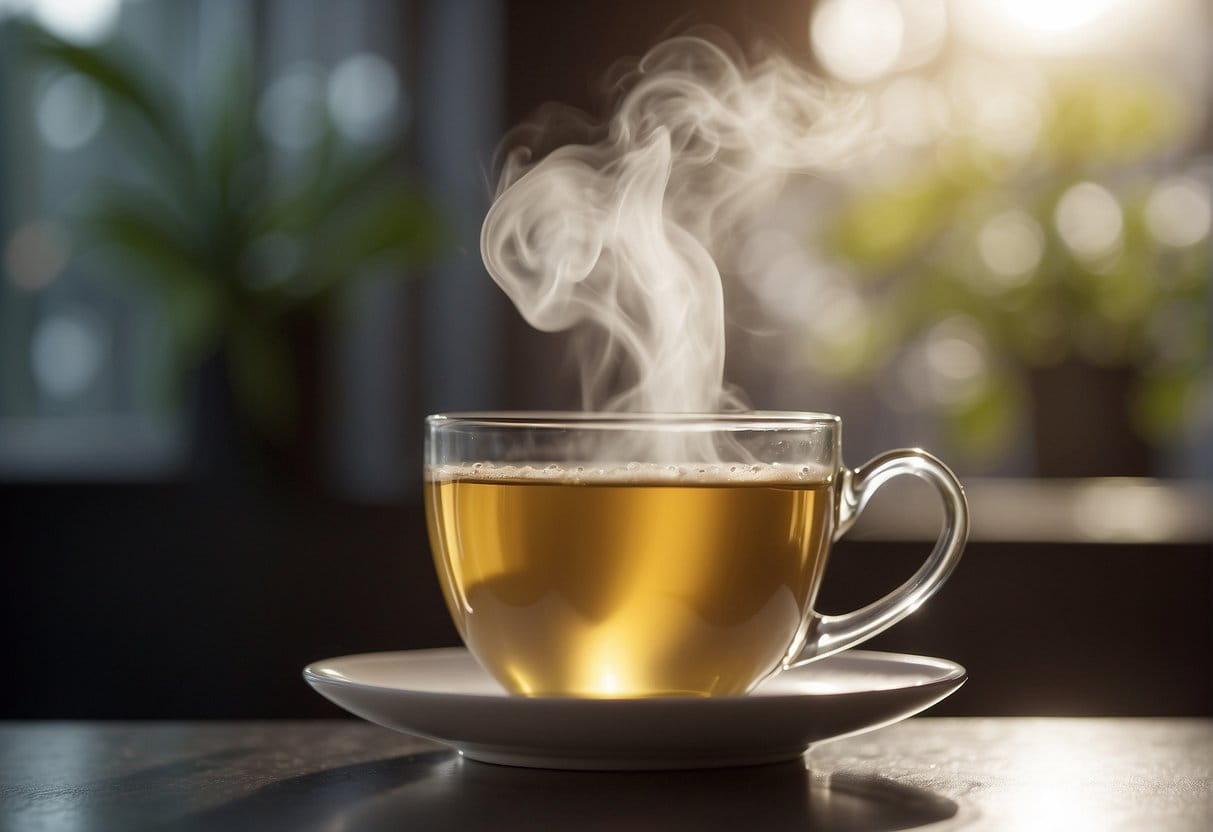
White tea is known for its delicately subtle flavor and comparatively low caffeine content. Understanding its caffeine levels and how it compares to other teas can help you make informed decisions about your tea consumption.
Which teas are known for having low caffeine levels?
White and green teas typically have the lowest caffeine levels when compared to other types of tea. Specifically, white teas like Silver Needle and White Peony offer minimal caffeine content due to their light processing.
Can one find caffeine-free white tea, and if so, which kinds?
While all traditional white teas contain caffeine, you can look for commercially decaffeinated white teas. However, it's worth noting that complete caffeine removal is impossible, so these teas will still contain trace amounts of caffeine.
What are the health benefits of consuming white tea?
White tea is rich in polyphenols, which are antioxidants that may help protect against free radicals and promote overall health. Additionally, its anti-inflammatory properties can contribute to the reduction of chronic inflammation and lower the risk of certain diseases.
How does the caffeine content in white tea compare to green tea?
On average, white tea contains slightly less caffeine than green tea. A typical cup of white tea has about 15-30 milligrams of caffeine, whereas green tea typically ranges from 20-35 milligrams per cup.
Are there notable differences in caffeine content between white tea and black tea?
Yes, white tea generally has significantly less caffeine than black tea. Black tea can contain about 40-70 milligrams of caffeine per cup, making white tea a milder choice for those looking to reduce their caffeine intake.
Does decaffeinated coffee contain less caffeine than white tea?
Decaffeinated coffee usually contains 1-12 milligrams of caffeine per 8-ounce serving, which can be less than or comparable to the caffeine content in a cup of white tea. However, the exact amounts can vary depending on the decaffeination process and the brand.
← Older post Newer post →











